Emojivision app turns your iPhone’s camera into a real-time emoji painting machine
Your iPhone is capable of some impressive feats of computational photography, and a new app created by developer Gabriel O’Flaherty-Chan shows one way all that power can be put to creative use. Emojivision lets you see the world as if it were made up entirely of emojis.
The free app (which induces an in-app purchase for $2.79 that unlocks more emoji packs) works by breaking down your iPhone’s camera sensor input to its color palette fundamentals, finding its nearest neighbor from a subset of emojis (organized thematically within the app) and then rebuilding the image with a filter that overlays the image, and that can run at 60fps, so you’d be hard-pressed to spot any lag between it and a real-time feed.
You can use the app to take selfies, interpret photos from your phone’s photo gallery or just mess around with resolution to see how finely detailed, or how abstractly and yet obviously emoji-based, you can get. This isn’t the app to go to if you’re looking for a hyper-realistic or clear visual interpretation of your face, but it is a fun thing to show your friends — and an impressive bit of software engineering, too.
O’Flaherty-Chan has created some noteworthy mobile software projects in the past — including when he managed to hack a fully playable version of Pokémon Yellow onto an Apple Watch. He’s currently working on building a gigantic real-time strategy game set within a procedurally generated universe – like a “No Man’s Sky” but with a focus on the RTS elements, which should make for a very compelling and evolving approach to gathering resources and expanding your empire.
Powered by WPeMatico
Experian makes strategic investment in location data company PlaceIQ
PlaceIQ is announcing a strategic investment from Experian.
CEO Duncan McCall said the investment is part of a growth round that PlaceIQ raised after divesting itself of its advertising business (which is being taken over by Zeta Global). He declined to disclose the size of the round, or of the Experian investment.
“It’s a multi-year, strategic partnership, where we will work together to license data [to Experian], and they also proactively become an investor in the company,” McCall said, adding that this “coincided nicely with us divesting of our media business and raising a modest growth round.”
While Experian is best-known for credit reporting, this partnership involves its marketing services business. Under the deal, the Experian Marketing Services will incorporate PlaceIQ’s LandMark location data product into its broader suite of data and measurement tools.
“With the mindset that consumers need to be at the heart of every marketing strategy, brands and agencies need to find ways to reach them and deliver more relevant messages,” said Experian’s president of marketing services Kevin Dean in a statement.” We believe quality data and advanced technology underpin that entire approach, and our collaboration and investment with PlaceIQ reinforce our commitment to helping brands meet that expectation.”
Asked about the direction of PlaceIQ’s business going forward, McCall explained that the company started with a focus on selling location data, and now, it’s gone back to “being a data-only company again.”
“Of course, we would have preferred to have focused on just one business model all these years, but life’s not that simple,” he said.
In his telling, PlaceIQ had to expand into the ad sales business because the infrastructure didn’t exist at the time to incorporate that data into the ad-buying process. Now that the infrastructure is there, PlaceIQ can focus once more on selling location data, which can then be used for targeting on a broad range of ad-buying platforms.
According to Crunchbase, PlaceIQ previously raised a total of $52 million in funding.
Powered by WPeMatico
Switch Lite is the portable Nintendo fans deserve
It’s the plight of the early adopter. A few years from now, there will be a new version of the console — one that works out the biggest flaws of the original, most likely at a lower price point. Having used Nintendo’s latest console a fair bit since its launch three years back, I can say without hesitation that the Switch Lite is exactly the one I’d buy now.
Granted, I’m not a typical gamer by any stretch. My relationship with the industry could be described as casual at best. Oh, and I don’t have a television. Yep, I’m that guy… and have been for a while. Point being, the Lite appears very specifically tailored to my needs. Really, the bigger question at this point is which color?
The Lite is $100 cheaper than the original Switch, a feat it accomplishes by removing some of the console’s more innovative features, including the ability to dock and play it on a TV. The solid state body also removes the shakable Joy Cons from the equation.
The console is notably smaller, too, with the 6.2-inch touchscreen getting scaled down to 5.5 inches. It’s not a huge change, but it’s certainly noticeable. On the upside, the smaller footprint means a lighter (as the name implies) device, down to 0.61 pounds from 0.88 pounds. If you’ve spent any time playing the original Switch, you’ll notice the difference right away.
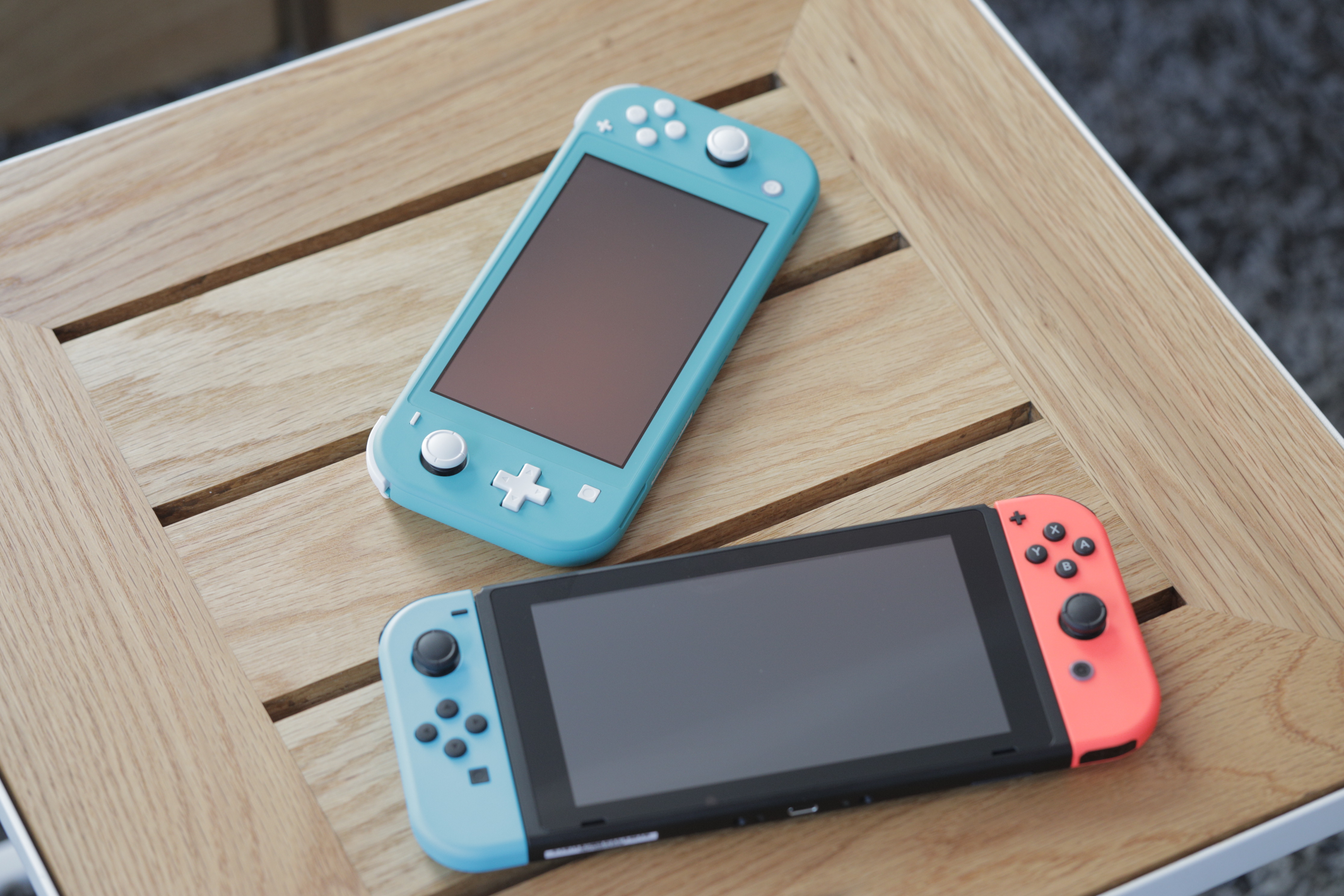
Like the newfound portability, I actually welcome the solid state design. I’ve basically played the Switch exclusively in handheld mode and have always found it annoying when the Joy Cons accidentally detach mid-game. As for those games that required a hearty Joy Con shake, that functionality is addressed in various ways, depending on the title. There’s an accelerometer built into the hardware here, so in many cases the player will end up shaking the whole console to accomplish this.
As FCC filings have confirmed, the battery is smaller on the Lite, but the smaller screensize negates that to some degree. A stated three to seven hours is a bit north of the original switch’s 2.5 to 6.5 hours — though still a fair bit less than the 4.5 to nine hours on the new model. Those numbers are game-dependent. Nintendo says the Lite should get about four hours playing Breath of the Wild, for example, versus the new Switch’s 5.5 hours.
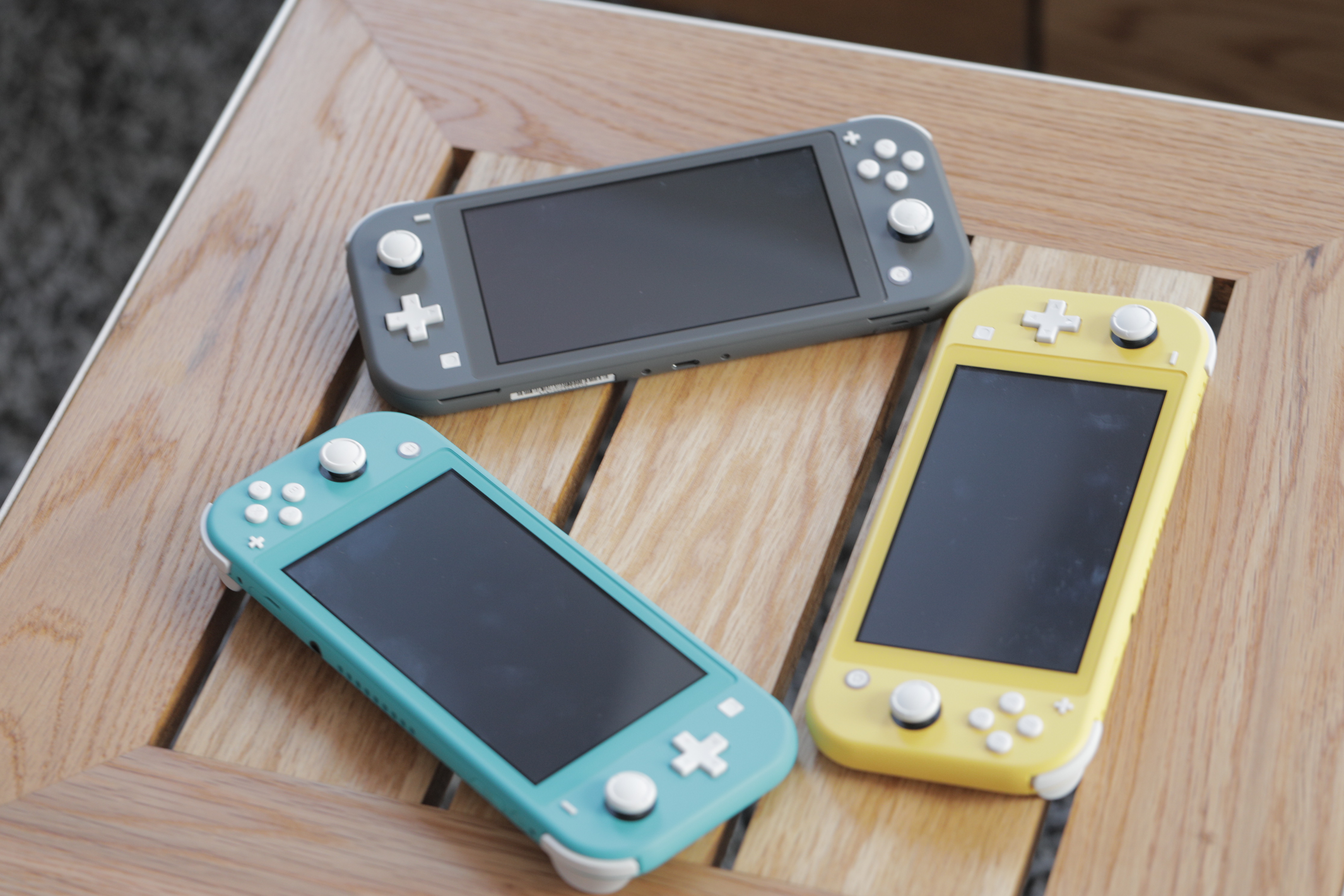
That’s definitely a bummer. As someone who’s interested in the Switch primarily as a travel companion, battery life has always been my chief complaint with the original model. It would have been great if Nintendo would have made battery a bigger focus on the Lite. There are understandably some limitations due to the smaller footprint, but I suspect the company could have squeezed a bit more life out of it here.
The addition of an honest-to-goodness D-Pad on the left side is a nice touch, too — and hopefully an indication that a lot more NES/Super NES classics are about to come to the console. My aging self will be spending a lot of money on downloads if that ever happens.
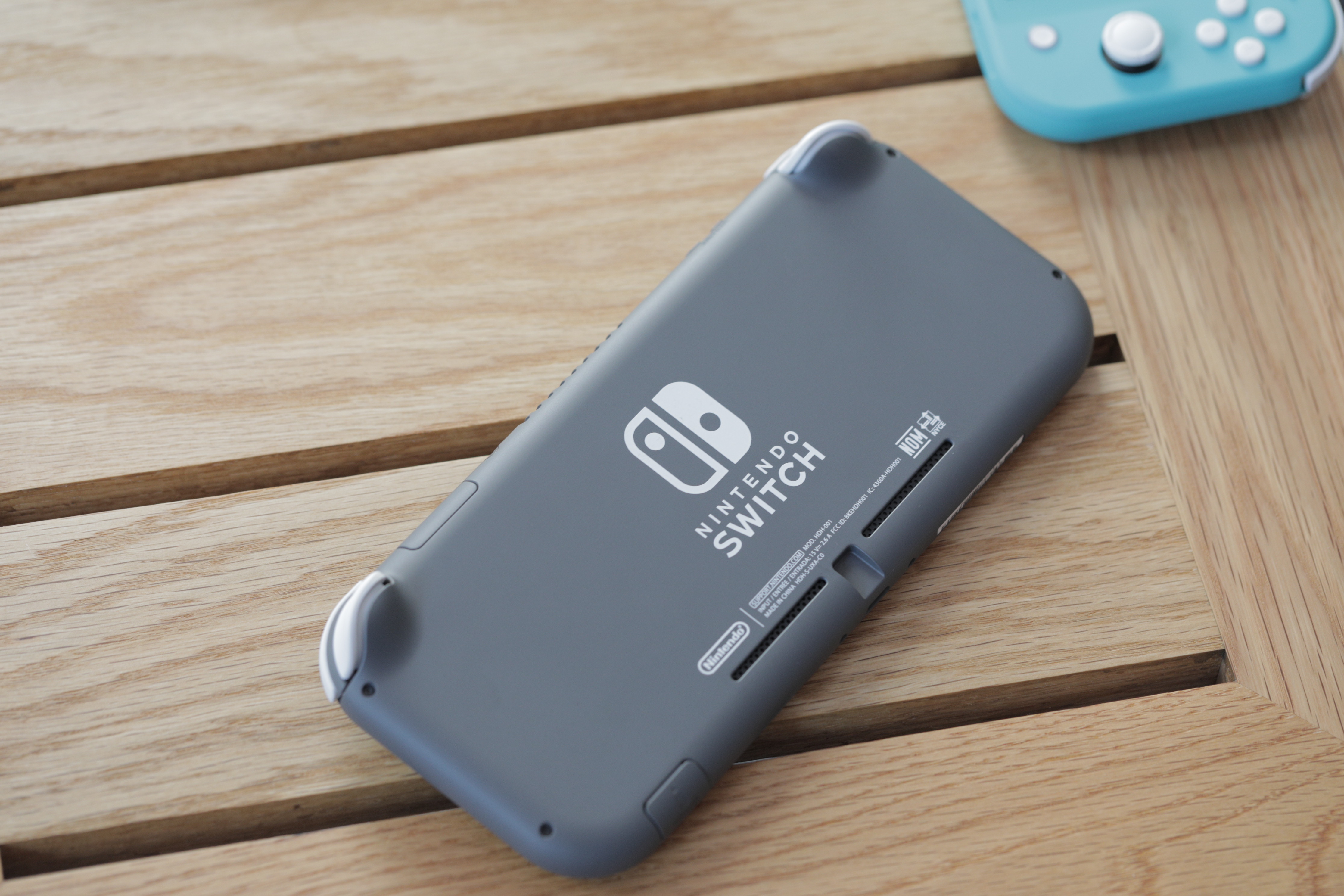
The color choice is surprising, but quite nice. The yellow and turquoise pop quite nicely, while the gray is considerably more understated — insofar as a Nintendo portable console can be understated, that is. I honestly went back and forth trying to choose one, but if I had to pick tomorrow, it would probably be the turquoise.
At $200, the Lite is $100 cheaper than the standard model and a no-brainer for those who find it difficult staying in one place. It arrives September 20.
Powered by WPeMatico
Yelp will let users personalize their homepage and search results
Yelp announced this morning that it will start allowing users to tailor their search results and homepage based on their personal preferences.
In other words, if you’re a vegetarian, or if you’re a parent who’s usually looking for kid-friendly restaurants, you won’t have to reenter that information every time you do a search. Instead, you can enter it once and Yelp will prioritize those results moving forward.
“In the history of Yelp, this is the first time two people searching for the same thing from the same context are going to see different, personalized results,” said head of Consumer Product, Akhil Ramesh.
To do this, users select the “Personalize your experience” option, then choose options around dietary restrictions (whether they’re vegetarian, vegan, gluten-free and so on), their lifestyle (whether they’re parents, car owners or pet owners), their accessibility needs (wheelchair access, gender-neutral bathrooms), the types of food they prefer and other interests (like bookstores or date nights).
Once you’ve made your selections, those preferences will start affecting the search results you see. The personalization should be obvious because the results will be identified as having “many vegetarian options” or “because you like Chinese food.” The homepage will also start highlighting locations that it thinks you would like.
In some ways, this feels like a long overdue move, particularly when so many other popular apps and websites are already heavily personalized. Shy is Yelp finally adopting this approach now?
For one thing, Ramesh pointed to a growing interest in different diets. For another, he said, “We have years and years of unstructured, expressive, quality content, and this content is representative of a real experience with a business. Over the last few years our machine learning and AI capabilities have grown immensely, and what that’s allowed us to do is build really useful features on top of the high quality content that we have.”
Ramesh emphasized that Yelp will focus on using your explicitly shared preferences to shape your results, as opposed to feeding all your behavior into an algorithm. After all, he said, “any machine learning algorithm is going to have tons of biases.”
He described this approach as “the human way”: If you were having a conversation with a person, “You wouldn’t try to assume what the person did over the weekend. You would just ask the person and have an open conversation.”
At the same time, he said there are times when using your general behavior in the app to influence the results could be helpful, so Ramesh said, “We’re trying to figure out how to balance those aspects.”
He also noted that your preferences could change depending on timing and context: You might abandon a certain diet, or you might go out for a meal without your kids. So you can adjust your preferences at any time — or conversely, dive more deeply into one of them by selecting a list from the homepage.
Asked how this affects Yelp’s ad business, Ramesh said it won’t influence the ads you see initially, but the ads will come with similar “Because you liked X” messages tied to your preferences..
“I wouldn’t be surprised if which advertiser we show will be you based on your preferences [eventually], but there’s no ETA on that,” he added.
Powered by WPeMatico
Kadena brings free private blockchain service to Azure Marketplace
The hype around blockchain seems to have cooled a bit, but companies like Kadena have been working on enterprise-grade solutions for some time, and continue to push the technology forward. Today, the startup announced that Kadena Scalable Permissioned Blockchain on Azure is available for free in the Azure Marketplace.
Kadena co-founder and CEO Will Martino says today’s announcement builds on the success of last year’s similar endeavor involving AWS. “Our private chain is designed for enterprise use. It’s designed for being high-performance and for integrating with traditional back ends. And by bringing that chain to AWS marketplace, and now to Microsoft Azure, we are servicing almost all of the enterprise blockchain market that takes place in the cloud,” Martino told TechCrunch.
The free product enables companies to get comfortable with the technology and build a Proof of Concept (PoC) without making a significant investment in the tooling. The free tool provides 2,000 transactions a second across four nodes. Once companies figure this out and want to scale, that’s when the company begins making money, but Martino recognizes that the technology is still immature and companies need to get comfortable with it, and that’s what the free versions on the cloud platforms like Azure are encouraging.
Martino says Kadena favors a hybrid approach to enterprise blockchain that combines public and private chains, and in his view, gives customers the best of both worlds. “You can run a smart contract on our public Chainweb protocol that will be launching on October 30th, and that smart contract can be linked to a cluster of private permission chain nodes that are running the other half of the application. This allows you to have all of the market access and openness and transparency and ownerlessness of a public network, while also having the control and the security that you find in a private network,” he said.
Martino and co-founder Stuart Popejoy both worked on early blockchain projects at JPMorgan, but left to start Kadena in 2016. The company has raised $14.9 million to date.
Powered by WPeMatico
Mario Kart Tour arrives on iOS and Android on September 25
Nintendo’s next mobile game, Mario Kart Tour, will be available on iOS and Android devices starting on September 25. The official Twitter account for the game revealed the launch date, and shared the pre-registration link where users of both platforms can sign up to get the game when it launches.
The mobile installment of Nintendo’s incredibly popular cart-racing franchise was originally announced last year, and at that time had a planned launch window of sometime before the end of March 2019. Nintendo later updated that date to sometime during this summer in order to “improve [the] quality of the application and expand the content offerings after launch,” according to a statement in one of the game-maker’s earnings reports.
September 25 is technically after the end of summer, the last day of which is officially September 23, but it’s pretty close. Nintendo also released Dr. Mario World earlier this year, so it’s been a busy year for the company in terms of launching mobile adaptations of its popular franchises.
Mario Kart Tour had a closed beta in the U.S. and Japan, which was Android-only, earlier this year. Details from the beta include a look at the rather expansive roster, as well as a lot of in-game purchase mechanics that might frustrate fans of the main series.
Powered by WPeMatico
Axonius, a cybersecurity asset management startup, raises $20M in Series B
Cybersecurity asset management startup Axonius has raised $20 million in its second round of funding this year.
Venture capital firm OpenView led the Series B, joining existing investors in bringing $37 million to date following the startup’s $13 million Series A in February.
The security startup, founded in 2017, helps companies keep track of their enterprise assets, such as how many clouds, computers and devices are on their network. The logic goes that if you know what you have — including devices plugged into your network by employees or guests — you can keep track and discover holes in your enterprise security. That insight allows enterprises to enforce security policies to keep the rest of the network safe — like installing endpoint security software, or blocking devices from connecting to the network altogether.
Axonius’ co-founder and chief executive Dean Sysman said the company takes a different approach to asset management.
“You can’t secure what you don’t know about,” he told TechCrunch. “Almost everything you’re doing in security relies on a foundation of knowing your assets and how they stack up against your security policies. Once you get that foundation taken care of, everything else you do will benefit,” he said.
Instead, Axonius integrates with more than a hundred existing security and management solutions to build up a detailed picture of an entire organization.
Clearly it’s a strategy that’s paying off.
The company already has big-name clients like The New York Times and Schneider Electric, as well as a handful of customers in the Fortune 500.
Sysman said the bulk of the funding will go toward the expansion of its sales and marketing teams, but also the continued improvement and development of its product. “We’re hitting the gas and continuing to bring our solution to as many organizations in the market as we can,” he said.
Axonius said OpenView partner Mackey Craven, who focuses on cloud computing and enterprise infrastructure companies, will join the board of directors following the fundraise.
Powered by WPeMatico
Can Fairphone 3 scale ethical consumer electronics?
Fairphone, the Dutch social enterprise that’s on a mission to rethink the waste and exploitation that underpins the business of consumer electronics, has unboxed its third smartphone.
The handset, which is sold with the promise of longevity rather than cutting edge obsolescence, goes on pre-sale from today in Europe via Fairphone’s website with a suggested retail price of €450 (depending on local taxes and levies). It will ship to buyers on September 3.
Like its predecessor, the design is modular to allow the user to swap out damaged parts for replacement modules that Fairphone also sells.
Out of the box the phone comes with Android 9 preloaded. A post-launch update will make it easy for buyers to wipe Google services off their slate and install the Android Open Source Project instead.
Commenting in a statement, CEO Eva Gouwens said: “We developed the Fairphone 3 to be a real sustainable alternative on the market, which is a big step towards lasting change. By establishing a market for ethical products, we want to motivate the entire industry to act more responsibly since we cannot achieve this change alone.”
“We envision an economy where consideration for people and the planet is a natural part of doing business and according to this vision, we have created scalable ways to improve our supply chain and product,” she added.
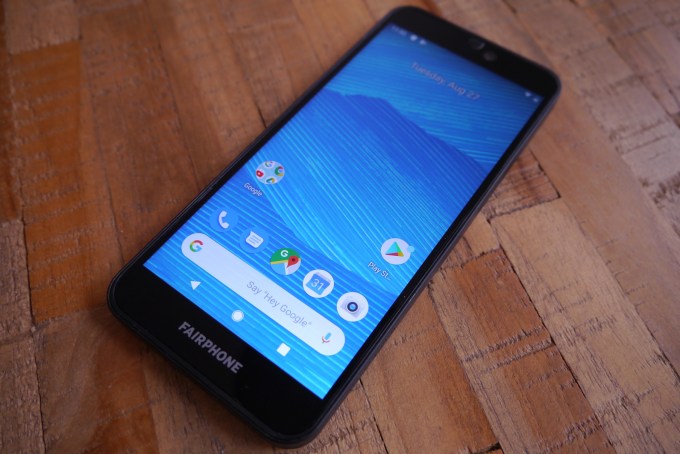
Fairphone 3 running Android 9 out of the box
Mining an ethical niche
Since 2013, the hardware startup has focused on selling smartphones attached to a pledge of fairer working conditions for the people who assemble them, and greater transparency around the sourcing of minerals and materials needed to make them — as well as designing for longevity and repairability.
More than 80% of the volume of the Fairphone 3 is recycled, according to founder (and former CEO) Bas van Abel. He also touts its own research that suggests a Fairphone 3 owner who’s able to keep and maintain the device can save 30% of CO2 emissions or more over the product’s lifetime.
In seeking to achieve its flagship ‘fair phone’ pledge the team behind Fairphone has had to go beyond the surface hardware — and innovate on developing supply chains that can live up to an ethical agenda.
Fairphone 3’s PR flags “responsibly sourced and conflict-free tin and tungsten, recycled copper and plastics”, as well as fair trade gold which it sourced for the handset (and is working to integrate into its supply chain). It also says it’s in the process of setting up an initiative for “better sourcing of cobalt”, aka the key mineral for energy transition.
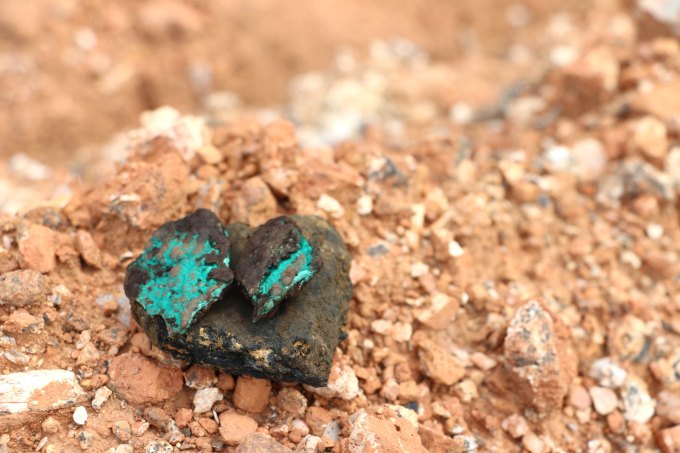
Malachite, copper and cobalt. Image credit: Fairphone
On the labor and human rights front, the Fairphone 3 is assembled by Taiwanese manufacturing partner Arima — which Fairphone says it has collaborated with to “improve employee satisfaction by improving worker representation, health and safety and by paying a bonus to workers with the aim to bridge the gap between minimum and living wages in the factory”.
In practice van Abel says this means Fairphone pays the assembly workers employed by Arima a bonus based on increased performance around its social goals. Rather than, per more usual industry practice, punishing the manufacturing partner if it fails to hit stringent delivery targets — which then encourages a punishing spiral of forced overtime that erodes workers rights and welfare.
It also has social incentives programs in three other factories that put together components for the device, such as its speakers.
Despite what are clearly laudable and lofty goals, selling fairer and more ethical smartphones remains a niche business for now, with Fairphone’s total shipments to date representing less than 0.1% of the Western European smartphone market. It is also still a European-only business. But it’s a niche that van Abel says is “growing at high speed”.
“I do believe it’s very feasible for Fairphone to [ship 200,000 smartphones per year] in the next couple of years,” he says, adding: “We can address a small part of the conscious consuming market” — pointing to Gouwens’ background at a Dutch confectionary company, Tony’s Chocolonely, which was set up in 2005 to campaign for fair trade and slave-free chocolate, and now has the biggest marketshare on chocolate in Holland.
Phones are of course far more complex to make than bars of chocolate. But in recent years a maturing smartphone market has seen a slow down in the pace of technological innovation coupled with rising commoditization that’s made differentiation a major challenge for Android OEMs especially.
So if there’s a point in time when a fair trade smartphone might stand a chance against the Samsungs, Huaweis, Xiaomis, Oppos, LGs and so on then the current moment has a fair bit to recommend it.
At the same time, concern about the environmental cost of business models that depend upon continuous resource use and generate mountains of e-waste is also growing — thanks to greater visibility and awareness of the damage caused at both ends of the pipe (including as countries like China put hard limits on the types of foreign waste they’ll accept).
“I believe that we are more and more ready for [sustainability and fair trade] in consumer electronics and I do see that the conversation in consumer electronics is definitely changing — it’s much more mature on sustainability,” says van Abel. “More and more companies are looking into it, and it’s also more demanding from the consumer perspective. You see that that’s changing as well. So it will happen. It’s just that it’s not happening fast enough.”
“We’ve been not so successful in disconnecting the [consumer electronics] business models from the use of resources yet but that is a legacy from an economic system that was set up centuries ago,” he adds. “Where growth is connected to the use of resources — and that has to do with sustainability and change and a changing mindset.”
The wider conviction, for Fairphone as a social enterprise, is to work to generate momentum that pushes the consumer electronics industry towards a circular future — where fairer conditions for workers and a reduction in waste and resource use; a focus on product longevity via repairable design and component reuse; and end of life recycling are no longer exceptional but what every player strives for.
The project is indeed a massive one. And Fairphone remains very much a work in progress — an ambitious attempt at reforming all the tarnished links in the smartphone supply chain. So yes, it’s by no means perfect.
The industry that it has to interact with still contains plenty of murky corners which a tiny company has only very limited power to sway. Even as Fairphone has punched above its weight by using campaigning roots to build consumer awareness and industry buy in that’s enabled it to enact small on-the-ground changes which have the potential to scale into something bigger.
Its investors include Bethnal Green Ventures, Pymwymic, Doen Participaties, Quadia, Dutch Good Growth Fund and ABN Amro Fund. More than $40M has gone into the business since Fairphone was founded — in seed, VC and debt financing.
“The problem with the industry is that the deeper you go into the supply chain — like the third, fourth tier — the worse it gets,” says van Abel. “So the assembly factories where you have a direct relationship are basically the ones that are doing pretty well, also because they have all these rules and things put upon them by big manufacturers. Companies are most vulnerable on the ODMs.
“So the further you go into the supply chain where they’re really making the plastics and the small metals and that kind of stuff the worse it gets. So we really want to also make sure that that is being surfaced and that we put some attention on it… Are we able to change that deep into the supply chain? It’s really difficult to get that far as a small player but we’re trying.”
“On the supply chain we’ve been going along investing into programs all along the way,” he goes on, giving the example of a child-labor free mining program it’s set up in Uganda to source fair trade gold.
“We’re working really hard with lots of partners on the ground. It’s getting off the ground now but the gold that we get from there is not connected to the supply chain of the [Fair]phone yet — so that will be an innovation that will come along the way, coming in 2020.
“What we do now is we’ve taken all the supply chains that we had for Fairphone 2 and were able to get that into Fairphone 3. So at least we have everything that we covered with Fairphone 2 but in a way that is also more scalable. Previously we had the gold through our own supply chain going into the factories. Right now we have it set up in such a way that other companies can use that same gold and the factory can scale up with that gold as well. So it’s a higher amount, it’s more scalable but we’re also setting up new initiatives.”
“Another one is cobalt which we’re investing in a lot — which is used for batteries,” he adds. “If we get that initiative up and running it’s also very interesting for the car industry to actually use that same supply chain. Because one of the things that a lot of the industry is focusing on is recycling. But we all know that there’s not enough to recycle to actually feed the supply chain with the amount of minerals we need to make our products. So we still need mining. And that’s one of the things that the industry has not been very open about.”
Virgin resources being necessary to manufacture shiny gadgets and electronics-packed machines is the industry’s dirty not-so-little secret. This means mines where minerals are dug out of the earth in order to be refined or smelted for use in the modules and components packed inside devices.
Even consumer tech giants that make claims for the labor and welfare standards of their third party assembly factory workers aren’t typically making promises that extend all the way back to the mines where the minerals essential to their devices are dug out and processed. Fairphone is at least trying to dig into the dirtiest stuff.

Conflict-free tungsten mine in Rwanda now integrated into Fairphone’s supply chain. Image credit: Fairphone
“We have an approach where we look at closed pipe supply chains for certain materials from the mines all the way to the component. And we look at the factories that are involved along the line per component because we can’t do all the factories — so we can at least say along that whole supply chain we’ve looked at the factories working it in,” says van Abel.
“If you look at mining there’s nothing beautiful about mining… Mining in itself is bad for the environment, there’s a lot of harsh working conditions, it’s in third world countries many of the times, so it’s not a focus area of a lot of these companies because it’s… a far away story. So many of these manufacturers and phone companies focus on recycling.
“In itself recycling is not bad it’s just that we still need all these virgin materials. Also recycling is kind of a last resort as I see it — reusing components would be a better thing. And even the best thing would be using the phone as long as possible.”
Repairable for half a decade+
Like its predecessor, the latest Fairphone’s flagship feature — aside from fairer and more ethical assembly — is that it’s designed to be repairable. A fact that’s front and center when you open the box and find a tiny screwdriver nestled alongside what otherwise looks a fairly standard (if slightly chunky) Android smartphone.
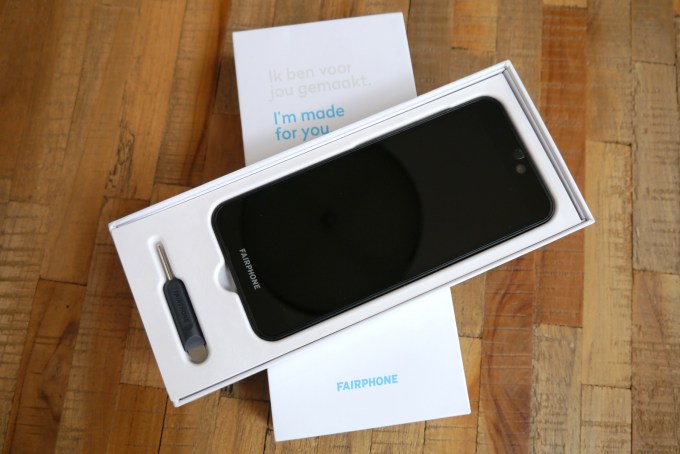
There’s no charger, USB cable or headphones in the box — intentional omissions to reduce unnecessary e-waste. The novel presence of a tiny metal and plastic screwdriver seems a fair trade for the usual accessories which Fairphone has calculated most phone buyers will already own. (If not, it can sell you a charger.)
Its big promise with this, its third generation handset, is that it will be supported for the next five to seven years.
van Abel tells TechCrunch he’s confident it can deliver on that “bold” pledge — having learnt some hard lessons over the past five+ years of pushing against ingrained industry habits baked into clockwork component upgrade cycles.
It wasn’t always like this. Some buyers of the first-gen Fairphone were disappointed and even angry when it announced it was ending support for that device in 2017 — meaning an early adopter would only have had between two and 3.5 years’ support for a smartphone that was sold as ‘repairable by design’.
The problem Fairphone found itself first crashing into, and next seeking to tackle head on, is that the consumer electronics industry as a whole is not geared up for sustainability and repairability but rather locked to regular (wasteful) upgrade cycles which in turn drive regular ~two-year component refresh cycles.
This tick-tock onward march of upgrades makes supporting older hardware a challenge. In seeking to go against the grain Fairphone has literally had to stockpile enough components to ensure it can offer years of spare part runway to support its devices.
In parallel, industry software has also needed to evolve so chipsets can be supported for longer — and van Abel says “a lot of software is actually changing. You can upgrade more and more easily to new software” — so it’s finally in a position to be confident that the latest handset can last.
“Our company has gotten much more mature,” he also says. “We are better equipped to deal with the scaling, the financial position has increased and has changed up to a point which is much more solid — so the whole support system, the ecosystem, around the phone has improved a lot.”
The Fairphone 3 is its second handset design to incorporate repairable modules that are designed to be accessible to the user. It comes in a translucent shell that also acts as a protective bumper and is stamped proudly down the side with the words “designed to open”.
Crack into it and you’ll find six modules that can be swapped out with a little bit of elbow grease and a Phillips #00 screwdriver — including the display, speaker and camera, as well as the battery (harking back to days when replaceable batteries were a smartphone norm).
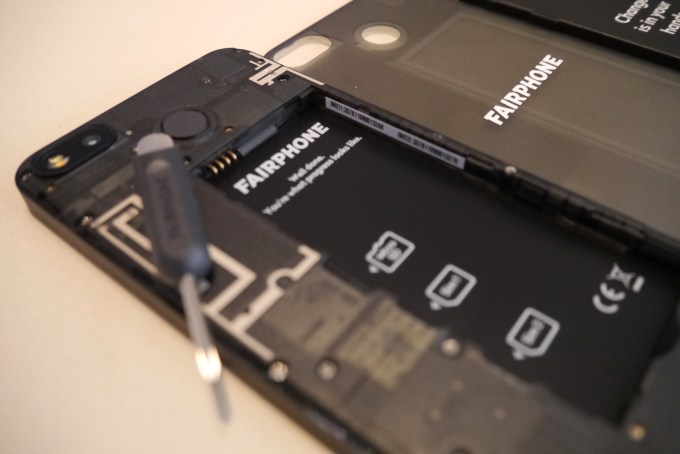
Fairphone 3 — modularity refined
The aim of this type of modularity is not for customization or upgrades but for sustainability by increasing longevity by making it easy and cheaper to replace a damaged or defunct component vs junking the whole phone or having to take it to a specialist shop for expensive repair.
To be clear Fairphone is not offering upgradable hardware modules to boost phone performance over time but like for like replacements. It wants each Fairphone user to keep the same handset for longer — even if it gets dropped and the screen cracked, or used so much the battery loses its capacity to hold a charge.
“One of the biggest changes we’ve seen in the phone industry is that there’s small incremental innovation — which is in our benefit. So I think the time is right now,” says van Abel. “We are able to support phones longer. It has to do with the hardware, it also has to do with the software. The software you see that many of the software platforms… offer a better integration with the chipset. So also for future upgrades.
“You will see the software will run for longer time also on these chipsets — which basically are at a point where you will not run WhatsApp faster on a newer chipset. For some [other] stuff, especially on 3D gaming and the really high end computing stuff, it makes sense to go to the new processors but most of the stuff you will be able to do on the average processor on the phone. So it paves the way to keep phones in the hands of the consumers for a longer time, which makes sense. Because it’s cheaper for consumers… and it also is more sustainable.”
With the Fairphone 3 he says the company sought to dial down the “radical” modularity of its earlier crack at the concept — so the result is less of a ‘party trick’ smartphone design, as the Fairphone 2 was (he dubs it a “show off” phone) — and more, well, dull but worthy; modularity as a utility that’s there to enable (occasional) repairs.
“You don’t need the phone to be so super smooth in taking apart to be able to repair it,” he says. “Fairphone 2 goes beyond the idea of repairability. It’s more a show off phone in that sense. And that also comes with risks.”
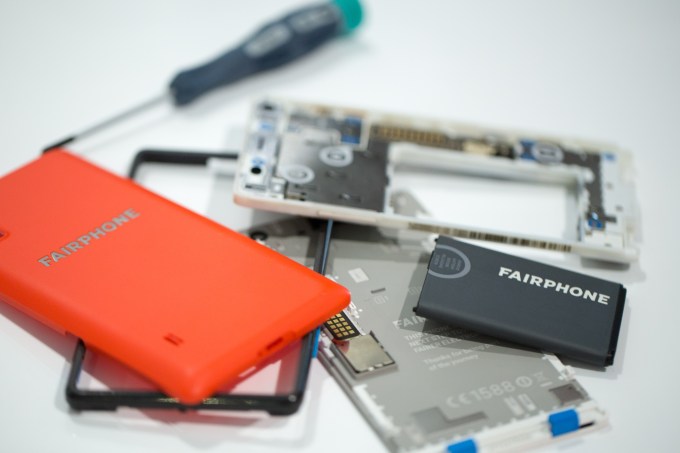
Fairphone 2 — its earlier, flashier crack at modularity
Refining its approach to modularity also means Fairphone has been able to reduce the cost of the handset. Consumers will see that in a cheaper price-tag (€75 less than the prior model) — which puts it in reach of a bigger group of potential buyers.
The design is a cost (and risk) saver for Fairphone too in that it’s easier to manufacturer. And cost and sales volume are important when you’re trying to demonstrate that making sustainable hardware can still turn a profile. (Not that Fairphone is there yet — but finding a path to profitability is a core part of the mission.)
For users the only slight downsize of the reconfigured modular design — which has a full 13 screws just holding the display module in place — is that getting to the guts involves more fiddling than it used to. Which again seems a fair trade given how rarely you should need to get into it.
“Fairphone 3 there’s less risk involved in manufacturing, the design is more sturdy so in that sense it’s also a phone we can scale with as a company — so the whole ecosystem around it; the quality control,” says van Abel. “We have a big team now in China which we didn’t have with Fairphone 2. So we are much more confident with this phone we can offer a very high qualitative product.”
If the aim of your social enterprise is to reduce e-waste and overall environmental impact by selling phones that are designed to last longer than rival devices there is something of a natural tension about releasing any new handset model at all.
When I put this to van Abel he agrees but points to the push and pull around the product, given the unavoidable need for Fairphone “to stay relevant” by appealing to smartphone buyers, and given the industry “not working int he way that we would like it to work”, as he puts it — i.e not being geared for longevity.
Fairphone definitely needs to be able to sell phones if it’s to make a positive dent in consumer electronics practices and processes. Which means enticing buyers is important.
And on that front its last model wasn’t an amazing success — saddled with uninspiring hardware at a fair trade premium price. (A pretty biting 2016 review by Wired called it “ethical but ugly”, complaining also that it had a slow camera and dated hardware.) Closing that ‘compromise gap’ is thus a key aim with Fairphone 3.
van Abel enthusiastically talks up the performance specs, noting particularly that they’ve put a lot of work into improving battery performance (the removable cell is 3000mAh, and includes fast charging) and on software engineering to integrate the camera — which he claims, as far as performance and photo quality goes, is “on par” with high end smartphones “that cost twice as much”.
At a glance the 5.7 inch full-HD screen also looks clear and crisp. Plus there’s a fingerprint reader on board, as well as NFC and 4G. Inside is a Qualcomm Snapdragon 632 engine, 4GB of RAM and a generous 64GB of storage (further expandable via an SD card slot). Dual SIM slots are another welcome touch.
The handset comes preloaded with a vanilla implementation of Android 9 (Pie). But as noted above buyers will be able to switch for a non-Google alternative — via an updater that will let them wipe and install the Android Open Source Project flavor of the OS. (The updater will come post-launch, according to van Abel, who notes that around 5% of Fairphone users opt to go full open source.)
Ethics aside, one straight up hardware boast the Fairphone 3’s got going for it is that it has a 3.5mm headphone jack. Which is something you won’t find on Apple’s latest iPhones. Nor on Samsung’s newest flagship. The march of tech progress has erased the accessory-friendly hole from premium devices.
So it’s a nice additional perk for Fairphone 3 buyers who’ve invested in wired headphones — meaning they can keep using other kit for longer too.
From fair trade chocolate to smartphones as a service
The smartphone industry has marched at a pretty steady clip since Fairphone 2 was released at the back end of 2015, with rivals updating their own much more expansive product portfolios at least annually. So an upgrade more than three years after the last Fairphone doesn’t seem overly wasteful or indulgent.
And while Fairphone has never pretended it’s going to be able to compete, like for like, with top tier smartphones on pure hardware specs and features it does need to be able to offer a phone that’s compelling enough to convince buyers to switch.
Good enough smartphone hardware with a guarantee of repairability and which is combined what it calls “fair specs” — i.e. a minimum wage for a workers in its supply chain plus a bonus that aims to close the gap with that and a living wage — is its sales pitch for Fairphone 3.
Who Fairphone buyers are is also expanding, according to van Abel. So while, two years ago, he talked of the typical user being a ‘Gen X German with a master’s degree’, now the target is any conscientious consumer.
Selling at least 100,000 handsets per year is the goal. To date it’s only sold ~175,000 Fairphones in total — through pre-sales and organic growth — but it reckons the new device will enable it to scale beyond that core fan-base to address a wider community of ethical consumers.
It’s being helped to that end by expanded carrier partnerships — such as one with Orange in France which will see the mobile operator range the handset in 600 stores.
Scaling sales is another necessary part of the social mission, says van Abel — as Fairphone needs to show its social impact investors that it’s growing demand and building a market for ethical alternatives.
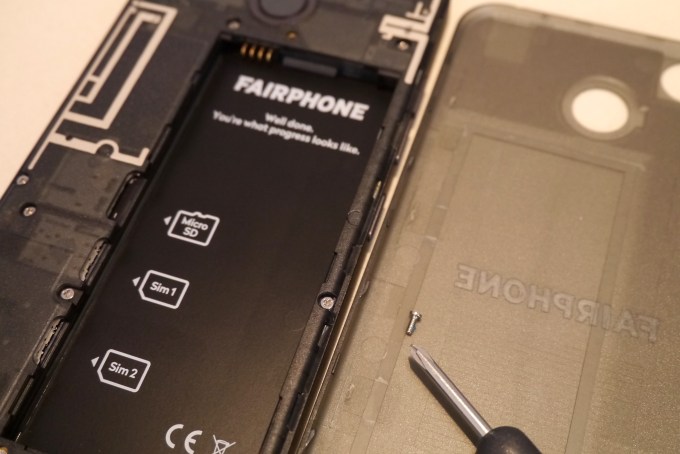
When — or even whether — there will be a Fairphone 4 is a question he isn’t keen to engage with. Clearly the hope is Fairphone 3 packs enough smartphone punch to go the distance. Though he hints it might look to offer additional smartphones in order to enter the US, a major market it’s so far not addressed at all.
While Fairphone has had a singular device focus to date, van Abel says it’s thinking about applying its hard won learnings around electronics supply chains to other types of consumer devices — suggesting ‘Fair’ could end up as a brand prefix atop an assortment of consumer gadgets.
“I think Fairphone has developed itself — even though it’s called Fairphone — into a brand that I’m pretty sure can go into a full blown, sustainable, consumer electronics brand. Because there are none,” he tells TechCrunch. “There are not so many brands in the industry that can differentiate on what they stand for. Apple does pretty well on design. But for the rest I don’t know a lot of premium brands that can differentiate on something that they’re really good at. And we’re good at creating social innovation and sustainability. And a lot of the supply chains that we’re using already can be used for other products as well.”
More broadly, the business is evolving to sell sustainably-minded process change back to the electronics industry itself — which of course needs to reform wholesale in order to enact the kind of root and branch change needed to support a fully circular economy.
In practice this means the ethical supply chains it establishes are intended to be open for others in the industry to use too. So Fairphone’s business of making ‘fairer’ handsets also functions as a showcase and case study to encourage wider industry reform — including via some direct partnerships that allow its own tiny orders for key minerals to be fulfilled by it piggybacking and scaling the order with the help of larger buyers.
Of course everything in electronics is connected. So real change isn’t going to happen overnight. Which makes being committed to stick at it and drive consumer awareness essential. It’s a long game. Even ethical chocolate took its sweet time to take over the market.
“With Fairphone 1 we had our own supply chains, with Fairphone 2 we were more and more exploring incorporating into scalable solutions for other parties as well, and with Fairphone 3 we already have consortia — for example the cobalt we’re doing together with Royal Philips and Signify… and some other big brands I can’t mention,” van Abel tells us. “Systemic change only happens when the whole system changes — so we can’t do that as a small company ourselves.”
He says the key shift the consumer electronics industry must make to pull off transformative reform to a circular economy that’s better for humans and better for the environment is to change its business model — a centuries old model that’s still obsessed with pushing “as much as possible into the hands of consumers at the fastest rate possible”.
On this front he believes services business models offer exciting potential to retune incentives for consumers and businesses to flip the conventional model on its head.
Fairphone is currently experimenting with a service based smartphone offering — working with a local insurance company on a trial to offer Fairphone as a service, where the phone is leased not owned.
“If you sell a phone every three to five years to a person you can also survive as a company. It’s not that you can’t survive. But — having said that — one of the things we are experimenting with is Fairphone as a service… And the beautiful aspect around running a product as a service is on the profit and loss of the company. When I sell you a phone you become a cost center right away as a customer, because all the after sales, everything around it basically is cost,” he says.
“If I sell you a service and a hardware product comes with it for you to be able to use… then I’m intrinsically motivated to have you use that phone as long as possible because every time I need to make a new phone it’s cost. Whereas every month I get my money from you as a customer and I can actually keep developing my service up to a point that it is more tailor made.”
While leasing has been very common in the smartphone industry on the mobile operator side, Fairphone is approaching it from a phone maker perspective — which van Abel reckons offers potential for disconnecting “as much as possible” the use of resources from the business model attached to smartphones.
‘Fairphone as a service’ is just a pilot for now, and he concedes the model would require a lot of money to be put on the table up front to cover the cost of use of the device for several years (further lengthening already lengthy repairable-oriented device cash cycles) — but recurring subscription payments at least sound like a model that could unlock the necessary up-front capital.
(van Abel also points to changes going on in the funding space — saying impact investing is now “hot”, and adding: “We’ve been pretty successful at finding the right impact investors to support our growth.”)
“I’m pretty hopeful because [humans have] been pretty successful at selling people stuff they don’t need so I’m pretty sure that we can also reverse that into marketing stories around products that last longer and people wanting products to last longer,” he says. “There’s a whole playground [with services]. Can you imagine that you start rewarding people if they actually keep their phone longer, if they have less parts broken… Now you reward a loyal customer with a new phone — what if you reward a customer that has their phone for a very long time with a lower subscription rate, for example. So there’s so much stuff to play with in that area. Not only by phone companies but also operators and everyone that is in connection with customers.”
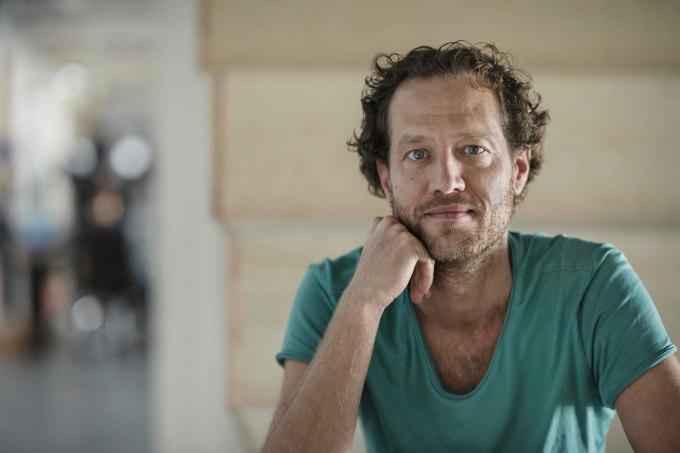
Fairphone founder, Bas van Abel. Image credit: Fairphone
“My vision is really the disconnect from the use of resources and the business models. That is really the key problem that we’re still dealing with — if you look at sustainability,” he adds. “From a human rights perspective we’re dealing with multiple complex situations where politics, countries, wars, all these things are attached to these supply chains — which have nothing to do with consumer electronics specifically, it has to do with the human condition. So that’s even a bigger challenge — in terms of how do we create world peace basically?”
While no one would pretend there’s an easy answer for that, changing anything for the better means being willing to start somewhere.
Powered by WPeMatico
Sweden’s Hedvig raises $10.4M led by Obvious Ventures to build ‘nice insurance’
Hedvig, a Swedish startup, is following in the footsteps of Lemonade, building a new generation of insurance platforms that use AI to help evaluate customers and operate on a policy of using surplus for social good. Today the company announced the next stage of its growth. The startup has closed a SEK100 million ($10.4 million) round of funding to expand from its current offering of property insurance into a wider range of categories, and begin the costly process of expanding its business into more countries beyond its home market.
The funding values the company at SEK342 million ($35.5 million) — a modest figure considering Lemonade’s recent $300 million round, reportedly (per PitchBook) at a $2.1 billion post-money valuation — but helps position the company to set its sights on being a strong regional player (if not an acquisition target for Lemonade if it wants to quickly add new regions: the latter kicked off its first services in Europe earlier this year, so its global aspirations are clear).
It currently has 15,000 customers in its home market of Sweden, who use it for property insurance on rented or owned apartments, and Lucas Carlsen, the co-founder and CEO, said in an emailed interview with TechCrunch that it “definitely” plans to expand that to houses as well as other categories. Home insurance also covers contents, such as gadgets, and travel, and Carlsen said that the former (gadgets) accounts for the majority of claims at the moment.
The round was led by Obvious Ventures, the venture fund co-founded by Twitter/Medium/Blogger co-founder Ev Williams, with D-Ax, the early-stage investment arm of Swedish retail giant Axel Johnson Group, also participating, along with past investor Cherry Ventures.
“We are building a global company. We just started in Sweden since we happened to live here, and it serves as a good test market as we have some of the worlds’ most progressive and demanding consumers. Today, we do not have any news to share about future markets, but stay tuned!,” said Carlsen.
“The new funding will mainly be used to fuel growth in Sweden, but we’ll also be looking at extending into new markets and insurance categories. Insurance is capital intensive and our new partners are committed to supporting our long-term vision,” he continued.
Indeed, getting an investor like Obvious (which published its own short announcement about the investment) involved could open the door to introductions with a number of other investors down the road.
“Hedvig is harnessing its purpose, the power of AI, and its human-centered product to create a modern, full-stack insurance company. Their incredible team is delivering against the mission – to give people the world’s most incredible insurance experience – and we at Obvious are honored to help scale it further,” said Vishal Vasishth, one of Obvious Ventures’ other co-founders, in a statement.
Hedvig — named, Carlsen said, after a legend of “someone who stood up for others and fought for their causes: that’s what we do,” — will sound familiar to you if you know Lemonade.
It follows in a wave of more socially forward businesses that are being created, which are using technology to help disrupt the status quo but also to bridge the gap between building services that consumers need and the principles they would like to adhere to more if possible. (Other examples include the likes of Beyond Meat, which is also backed by Obvious; as well as the plethora of electric and hybrid vehicle makers; and more.)
In the case of Hedvig and the challenge of insurance, the proposition goes like this:
Hedvig uses technology and innovative algorithms to help assess a potential customer, who is then provided with lowest-cost, and often competitively priced, premiums. Then, as a “full-stack” digital company, it also uses its algorithms to help process claims. After Hedvig uses its bigger pot of money to pay out claims, the annual surplus is donated to charities selected by its customers.
“By not pocketing this money ourselves we can focus on providing the best service possible to you and not on making more money from denying claims,” Carlsen said.
Hedvig itself makes money by taking a cut off users’ monthly premiums (it doesn’t specify how much). To date, Hedvig has not disclosed how much it has been able to “give back” according to its business model. But the philosophy is that by digitising some of the more mundane processes that are relegated to human adjustors and customer agents at traditional agencies — and by not being inherently greedy — the startup is able to provide a more pleasant, more efficient and more conscionable service.
Powered by WPeMatico
Smartphone sales declined again in Q2, surprising no one
Stop me if you’ve heard this one before. Smartphone sales are down. Again. After years of growth, the smartphone market’s recent slide has continued into the second quarter of 2019, per numbers from analyst group, Gartner.
At 1.7% year over year, it’s not a huge slice of the overall pie, but it does point to a continued problem for manufacturers, dropping from 374 million to 368 million. The biggest hit continues to be in the high end of the market, as higher prices coupled with longer refresh cycles and fewer compelling features continue to contribute to the decline.
Of the top five markets, only China and Brazil saw growth. At 0.5%, however, China’s slight bump wasn’t enough to turn things around. Interestingly, Gartner notes that some of China’s growth may be due to manufacturers looking to move old flagship stock to make way for 5G models. Additional 5G phones, coupled with more carrier coverage, could drive sales a bit as well in future quarters.
The number two market, India, saw a 2.3% drop y-o-y, as consumer upgrades from feature phones to smartphones began to slow. The firm anticipates that sales will continue to remain slow through the end of 2019.
Apple continued to see declines, though those have slowed compared to the hit it took in the first quarter. Samsung and Huawei, meanwhile, were rare bright spots. Samsung’s growth was led primarily by mid-range and entry-level handsets like its Galaxy A series, while the deferment of Huawei’s U.S. ban helped boost its sale a bit for the quarter.
Powered by WPeMatico


